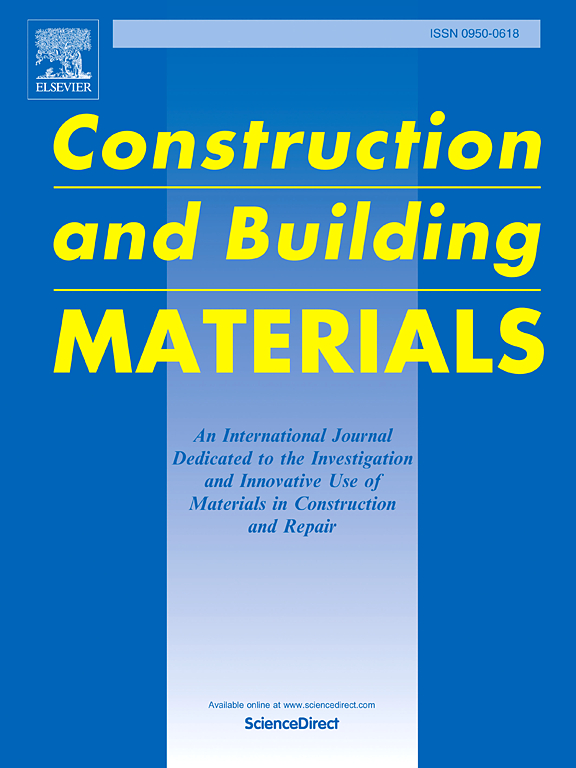基于实验室可加工性测试和机器学习建模的沥青混合料现场压实曲线的开发
IF 7.4
1区 工程技术
Q1 CONSTRUCTION & BUILDING TECHNOLOGY
引用次数: 0
摘要
清楚地了解沥青混合料的和易性和压实性对于优化现场压实和混合料设计至关重要。然而,仅靠标准的室内旋压试验往往不能准确描述原位压实行为,在实验室压实与现场压实之间存在差距。本文提出了一种创新而实用的方法来开发现场压实曲线,并利用实验室可工作性试验数据估计现场压实行为。首先提出了有效压实的旋转假设,认为颗粒旋转是连接实验室和现场压实的有效参数。这表明,在给定的压实能量下,粒子旋转运动的趋势在实验室和现场条件下保持一致。FHWA Turner-Fairbank公路研究中心(TFHRC)路面测试设施(PTF) 2023项目的四个车道的材料使用MixWorx™传感器根据ASTM D8541进行了测试。采用AutoML方法对机器学习模型进行优化。结果表明,LightGBM是预测现场压实曲线的最佳模型,压实水平的分类准确率为95.7% %,密度预测的R2拟合率为98.4% %。通过来自PA Altoona和安哥拉的现场传感和压实数据验证,IN项目证实了模型的稳健性和假设的有效性。该方法为优化沥青混合料设计和确定工作性问题提供了一种有前途的工具。本文章由计算机程序翻译,如有差异,请以英文原文为准。
Development of field compaction curves for asphalt mixtures based on laboratory workability tests and machine learning modeling
A clear understanding of asphalt mixtures' workability and compactibility is crucial for optimizing field compaction and mix designs. However, the standard laboratory gyratory compaction test alone often fails to accurately describe in-situ compaction behaviors, leaving a gap between laboratory and field compaction. This paper proposes an innovative yet practical approach to developing field compaction curves and estimating field compaction behavior using laboratory workability test data. A hypothesis of Rotation for Effective Compaction was first introduced, considering particle rotation as an effective parameter linking laboratory and field compaction. It suggests that the trend of particle rotational motion, under given compaction energy, remains consistent across both laboratory and field conditions. Materials from four lanes of the FHWA Turner-Fairbank Highway Research Center (TFHRC) Pavement Testing Facility (PTF) 2023 project were tested using MixWorx™ sensor in accordance with ASTM D8541. An AutoML method was applied for optimizing machine learning models. It identified LightGBM as the optimal model for predicting the field compaction curve, achieving 95.7 % classification accuracy for compaction levels and a 98.4 % R2 fit for density prediction. Validation with field sensing and compaction data from Altoona, PA, and Angola, IN projects confirmed model robustness and hypothesis validity. This method offers a promising tool for optimizing asphalt mixture design and identifying workability issues.
求助全文
通过发布文献求助,成功后即可免费获取论文全文。
去求助
来源期刊

Construction and Building Materials
工程技术-材料科学:综合
CiteScore
13.80
自引率
21.60%
发文量
3632
审稿时长
82 days
期刊介绍:
Construction and Building Materials offers an international platform for sharing innovative and original research and development in the realm of construction and building materials, along with their practical applications in new projects and repair practices. The journal publishes a diverse array of pioneering research and application papers, detailing laboratory investigations and, to a limited extent, numerical analyses or reports on full-scale projects. Multi-part papers are discouraged.
Additionally, Construction and Building Materials features comprehensive case studies and insightful review articles that contribute to new insights in the field. Our focus is on papers related to construction materials, excluding those on structural engineering, geotechnics, and unbound highway layers. Covered materials and technologies encompass cement, concrete reinforcement, bricks and mortars, additives, corrosion technology, ceramics, timber, steel, polymers, glass fibers, recycled materials, bamboo, rammed earth, non-conventional building materials, bituminous materials, and applications in railway materials.
 求助内容:
求助内容: 应助结果提醒方式:
应助结果提醒方式:


